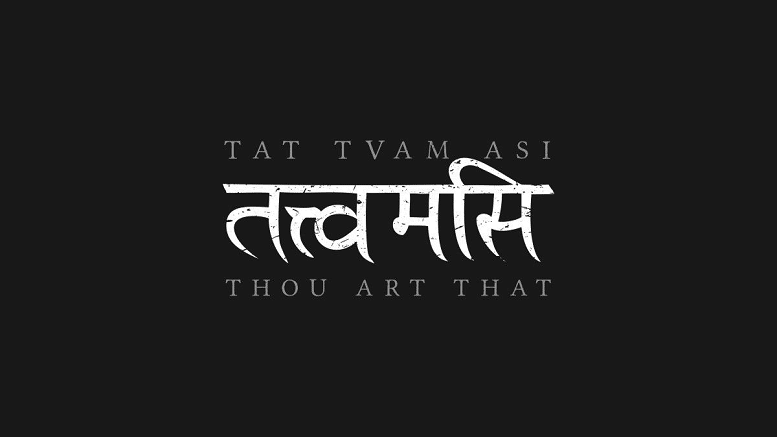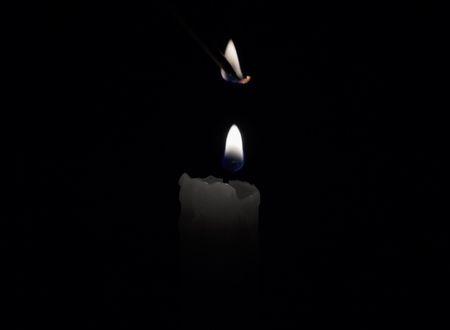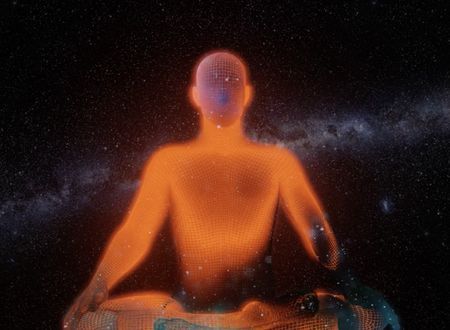What We Are
An Introspective Analysis
—
[Author's Note: I am posting it again because I accidentally deleted it. Sorry.]
What is the most profound question of human life?
It's this: "Who am I?". Or in other words, "What is the nature of our existence?". One who knows this is an enlightened being, and is free from the shackles of life and death.
We are human—the species called ‘homo sapiens’. Derived from Latin, it means ‘wise man’. This is our identity. But, let us for a moment, strip ourselves off all our identities, and see what we actually are.
Biological Organism
Among millions of other species on this planet, we are the human species, endowed with superior intellect and superb imagination. This separates us from all the other known living organisms. But like all other organisms, we are also biological organisms in the first place. In fact, we are the most complex organism there is.
On a more general note, any living entity made up of cell structures—be it plants or animals—are organisms. So, we are cellular organisms. Together those cells combine and form complex organs, like heart, lungs, liver, kidney, etc. If I, for a moment, do a thought experiment and remove all the 30,000 billion cells in my body, there won’t be ‘me’ anymore! Everything in our body, from neurons in the brain to the marrow in the bone, blood to enzyme, our veins and arteries and muscles—everything is made up of cells. So, there will be no trace of me. Well, atleast, biologically. But, atomically, every single atom in my body will be there in space. And this is where our identity at level two unfolds.
Atomic Structure
Every substance in this universe is made up of atoms. If we look at cells through a microscope, we will be astonished to see, those tiny cells are nothing but a complex molecular structure—made up of proteins, enzymes, RNA, mitochondria, ribosomes and countless other elements. But those elements are nothing but chains of molecules. And even those molecules are made up of strings of atoms.
Nearly 70% of our body is made up of water. That means, 70% of our body is just Hydrogen (H2) and Oxygen (O2). The other 30% is made up of Carbon (C), Nitrogen (N2), Phosphorus (P), Sulphur (S) and some other metals like Zinc (Zn), Iron (Fe), Magnesium (Mg), Potassium (K) etc. The calcium in our bones and teeth, the iron in our blood, the potassium in our brain—every nerve and sinew of this human mechanism is an incredibly complex and awe-inspiring atomic arrangement.
We are constantly interacting with the environment around us—in the form of breathing, sweating, excretion, taking food and water, and gaining and losing temperature all the time. And in this process, our atomic structure is constantly changing. Our organs are constantly adapting themselves as we are aging and exposing ourselves to natural influences. So, we are dynamic beings in every way, biologically, atomically and even psychologically. And this is true with every living organism, be it an amoeba or the great blue whale.
But there is a much subtler dimension to our being. We are not just a ‘biological organism’ or an intricately arranged ‘atomic structure’, we also have thoughts and feelings, emotions and imagination, memory and intelligence. And all these aspects make us a psychological being too.
Psychological Beings
We don’t just experience the body, we also experience a mind—where all the thoughts and ideas, emotions and imagination, memory and intelligence find their expression. And this dimension of our being has always been the subject of much debate throughout times immemorial.
The ancient Egyptians started documenting dreams, which until the time of Sigmund Freud, was quite a mystery to us. And still is! We have not yet fully understood the phenomena of dreams. Phenomena like telepathy, telekinesis, hypnosis, hallucinations, déjà vu— are some of the instances that still perplex us.
Psychology itself is a scientific discipline like Chemistry, Biology or Physics. Its whole concern is to understand the phenomena of the mind. And it’s ever widening to new horizons as we are expanding our understanding with the help of modern day technologies and neuroscientific methods. But the mystery is still on. And we are as awed as we were, especially when we realize that everything—from a safety pin to the rockets—is essentially the result of our mental prowess; because everything that we now see as our creation, was first created in our minds. This mind has wielded this earth, mined the land, built the bridges, dams, tunnels, and sky-scrapers, and has given us the wings to defy gravity and fly to outer space and do miraculous things, which even two hundred years ago people would have considered impossible!
We actually don’t know—what is the limit of the human mind, how far it can go. As someone very aptly said: “Limits exist only in mind.” William Shakespeare reiterated this conviction when he said:
“We know what we are. But we know not what we may be.”
That is the possibility of our mind. So, we are not just biological entities, we are psychological beings. Mammals, in general, show more complex emotions and intelligence than say reptiles, amphibians, birds, fishes or any other species. And we are the most advanced mammal species. That’s why, we are the only species who have very complex emotions and stupendous imaginative and intellectual faculties.
So, our brains are not the only thing that makes us different, it’s our complex and rich mental world which is unparalleled on this earth. We are a much more ‘psychological creature’ than a ‘biological organism’. Our mental experiences are more far-reaching and deeper than our physical experiences which we gain through our five sense organs. Mind is such a powerful dimension of our being that it has been able to change the very face of this earth.
But the funny thing is, although we all experience mental phenomena, it’s not possible to examine the mind objectively. Because, you see, the mind is not another organ in our body which can be examined upon. If we dissect the human body, we will not see anything which represents the mind. And this is where science ends and mysticism begins.
So, we say, the mind is not matter. It’s a subtler dimension of our being. Physics is helpless there. But, interestingly, the mind is not the last frontier to our being. Be ready to face the uncharted realm of Consciousness.
Consciousness: The Limitless Frontier
‘Consciousness’ may mean many things to many people. But essentially it means, the state of awareness. You see, we are ‘conscious’ animals, conscious in the sense that we can be tremendously aware of everything we go through, to such an extent that we can even be conscious of our thinking as we think. This is called metacognition. And actually, it’s only the beginning when it comes to being conscious. People often become conscious of their dreams while they are dreaming. This phenomenon is called lucid dreaming. These are actually complex phenomena, most of us are not even aware of our breaths most of the time!
But, to give you some perspective, there are levels of being conscious. We all know or have heard of three states of consciousness: the conscious, subconscious and unconscious states. This is from Freudian psychology. In Sanskrit, these three states are called jagrata (the waking state), swapna (the dreaming state) and sushupti (the dreamless deep sleep state). And another state is referred to in the great Indian Upanishads— the tureeya, which literally means the fourth state of consciousness.
Dr. Robert Keith Wallace, a pioneering researcher in the field of Transcendental Meditation (TM), has proven the existence of this fourth state of consciousness which he calls the Transcendental Consciousness (TC) in his Phd thesis— The Physiological Effects of Transcendental Meditation, A Proposed Fourth Major State of Consciousness*.
But even this is not the end. There are still higher states of consciousness. Anyone who has studied Buddhism or Hinduism will know that there are many more states of consciousness, at least according to these traditions. And, it is said that consciousness has no frontier at all. It’s boundless!
The great masters of all religions and traditions, the great yogis and mystics of all ages, the prophets, messengers and avatars of the Almighty Lord—they have said only about this! This is the essence of their whole teaching: that we are not just this combination of flesh and bones called ‘body’, we are the immaterial, indestructible, immeasurable, indescribable essence of this whole creation. We are light itself!
The Brihadaranyaka Upanishad from Yajur Veda (1.4.10) states: “aham brahmāsmi”, that is, “I am Brahman”. This is one of the 11 principal Upanishads and this is a Mahavakya, a great sentence or utterance. Those sentences which state about our real nature and the identity of the ultimate reality called Brahman, are referred to as Mahavakyas in our shastras. There are other Mahavakyas, like:
- tat twam asi (‘That Thou Art’ from Chandogya Upanishad of Sama Veda, 6.8.7)
- ayam ātmā brahma (‘This Very Self is Brahman’ from Mandukya Upanishad of Atharva Veda, 1.2)
- prajñānam brahma (‘This Consciousness is Brahman’ from Aitareya Upanishad of Rig Veda, 3.3)
So, this is the great revelation that our sages and seers extolled in the Vedas. This is our reality. Nothing less than that. And that’s what everybody should try to realize in their life.
—
Thank you.
Image Credit: thehindupost.in
Footnote: Wallace R. K. (1970). Physiological effects of transcendental meditation. Science (New York, N.Y.), 167(3926), 1751–1754. https://doi.org/10.1126/science.167.3926.1751









Comments & Discussion
6 COMMENTS
Please login to read members' comments and participate in the discussion.